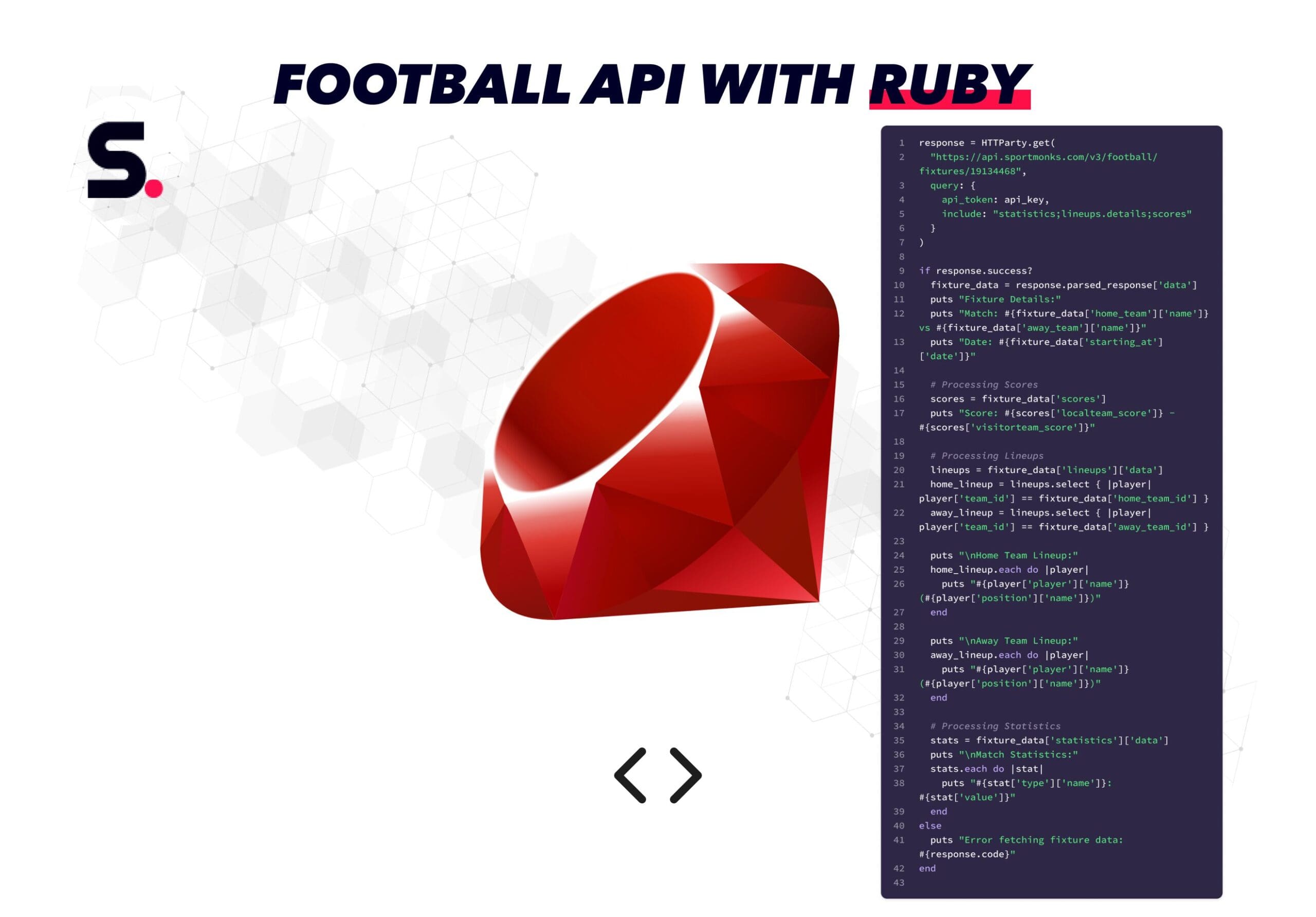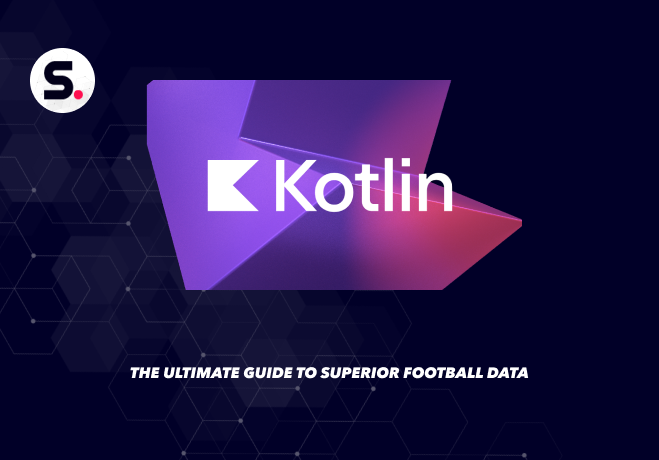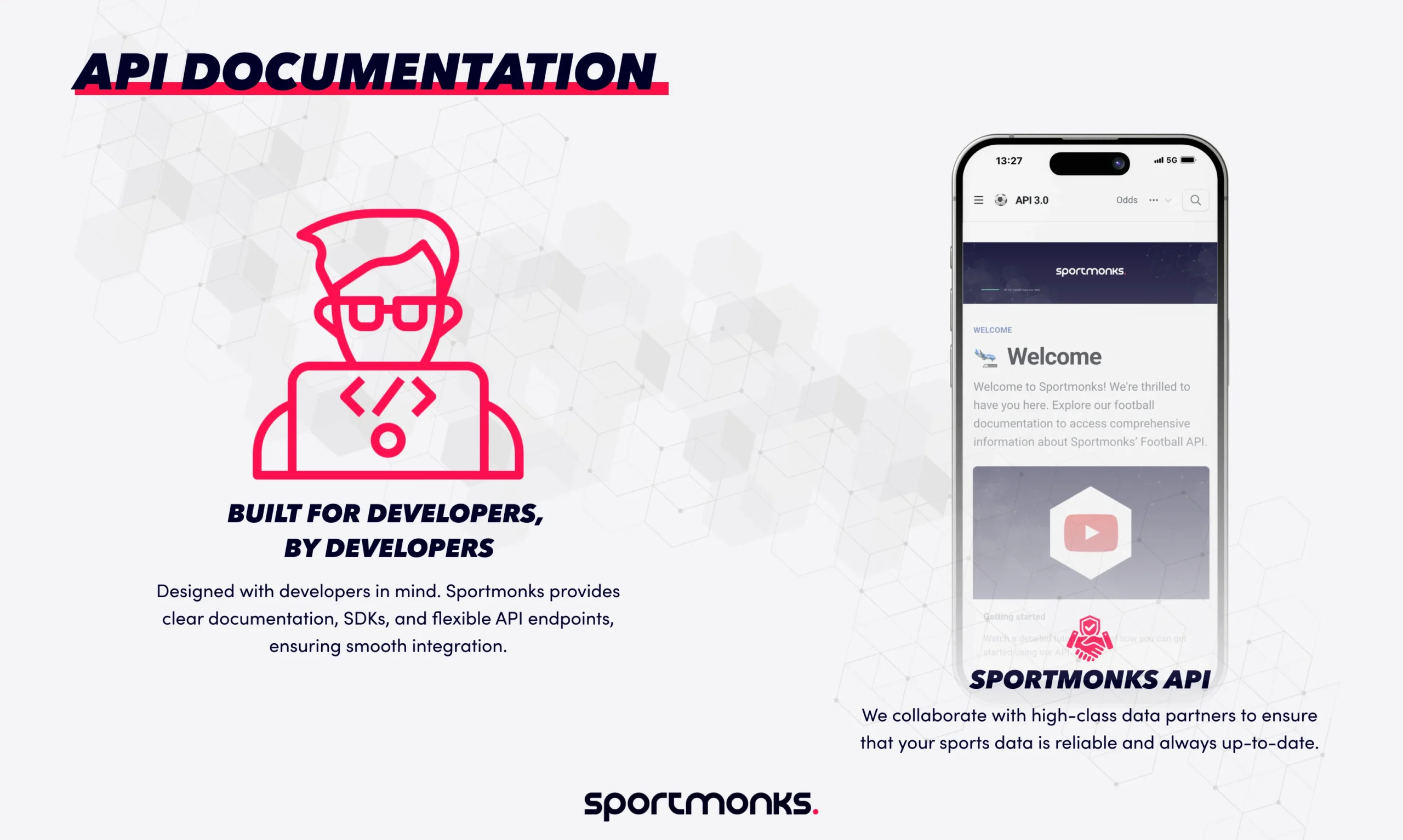
Contents
Key components of effective API documentation
Some essential parts of an API documentation include;
Introduction and overview
Begin with a concise explanation of the API’s purpose and target audience. For example, “This API provides access to comprehensive football data,” followed by a brief overview of available features such as teams, fixtures, and statistics. Sportmonks excels in this area by offering developers immediate clarity about their services and data offerings. Keeping this section brief captures attention and quickly conveys the API’s value.
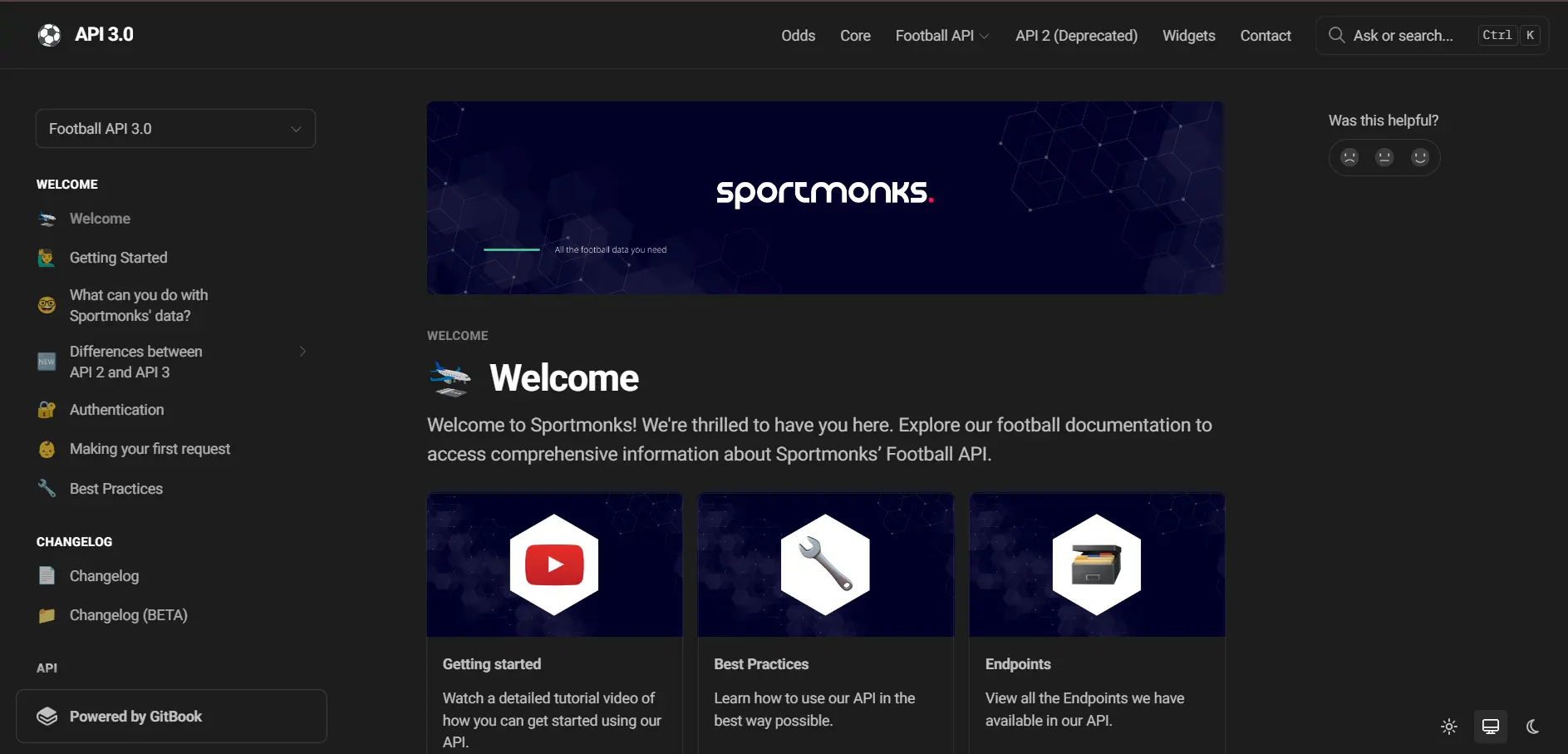
Authentication and authorisation
Clearly outline the methods for accessing the API, detailing security protocols like API keys, OAuth 2.0, or JWT. Provide step-by-step setup instructions, such as “Obtain your API key from the dashboard.” SportMonks requires authentication for every request, utilising either a bearer token or a query parameter token.
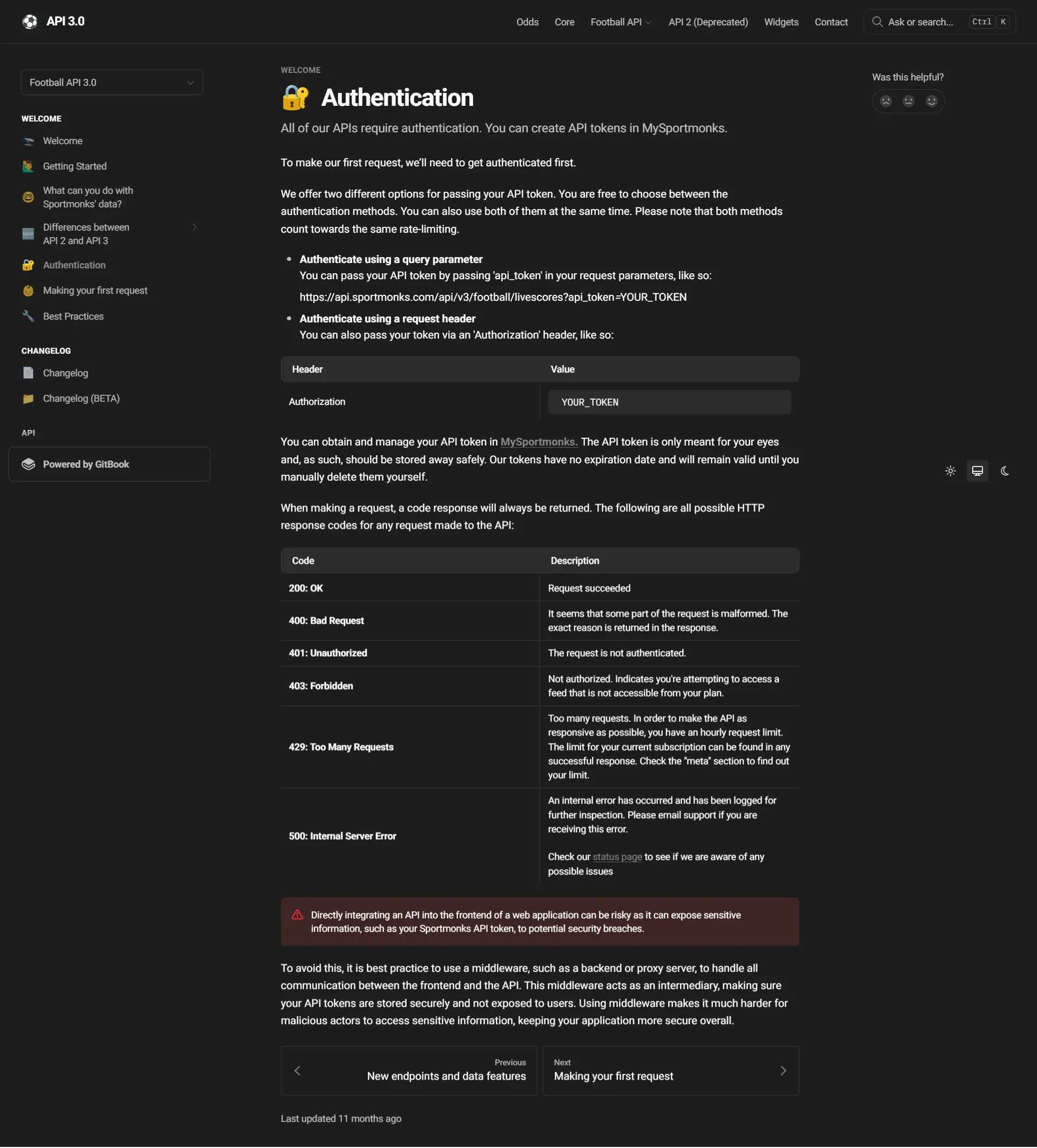
Endpoints and resources
Present a clear list of all API endpoints, including their URIs, supported HTTP methods (e.g., GET, POST), query parameters (e.g., ?include=players), and descriptions of the data each endpoint returns. This structured approach enables developers to understand and utilise the API effectively.
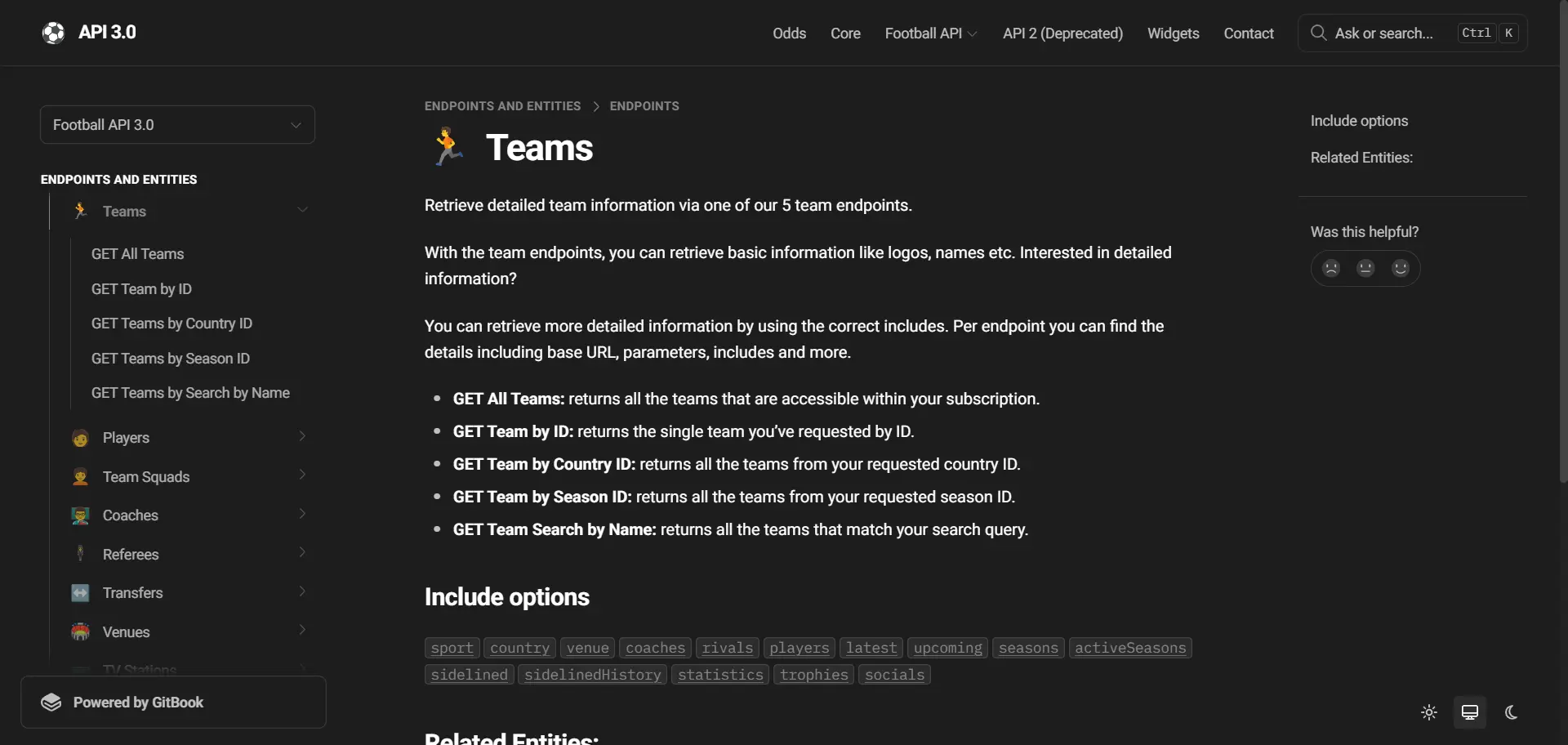
Request and response formats
Define the expected data formats for requests and responses, typically JSON. Provide examples that specify data types and required fields. For instance, a request to GET /v3/football/teams/19?include=players might yield a response like:
{
"data": {
"id": 19,
"name": "Arsenal",
"players": [
{"name": "Saka"}
]
}
}
Error codes and messages
Provide a comprehensive list of error codes (e.g., 400, 404) with explanations and suggested solutions. Meaningful error messages guide developers in troubleshooting issues efficiently. For example, a 404 error accompanied by “Team not found—check the ID” directs the developer to verify the team identifier. Sportmonks implements standard error messages and codes, such as {“error”: “Invalid API key”, “code”: 401} for credential issues and 429 errors to indicate rate limits.
Code and usage examples
Include working code snippets in popular programming languages like Python and JavaScript to demonstrate API requests, responses, and error handling. Well-structured asynchronous functions allow developers to seamlessly add the API into their projects. Additionally, step-by-step tutorials, such as utilising Sportmonks’ data to build soccer player data profiles offers developers a hands-on understanding of the API’s capabilities.
Version information
Keep developers informed about the current API version, changes introduced, and guidance for transitioning between versions. SportMonks exemplifies this by maintaining a dedicated page for version 3 of their API while keeping version 2 accessible for legacy users. Providing links to differences, such as “v2 /teams → v3 /football/teams,” and deprecation dates ensures developers can adapt to updates smoothly.
Rate limiting and usage policies
Clearly communicate usage limits and policies to maintain fair and stable API access. Explain quotas (e.g., “3000 calls per day”), headers like rate-limit-remaining, and consequences of exceeding limits. For instance, Sportmonks specifies 3000 requests to an endpoint per day” for enterprise plans and returns a 429 error if a user exceeds that limit.
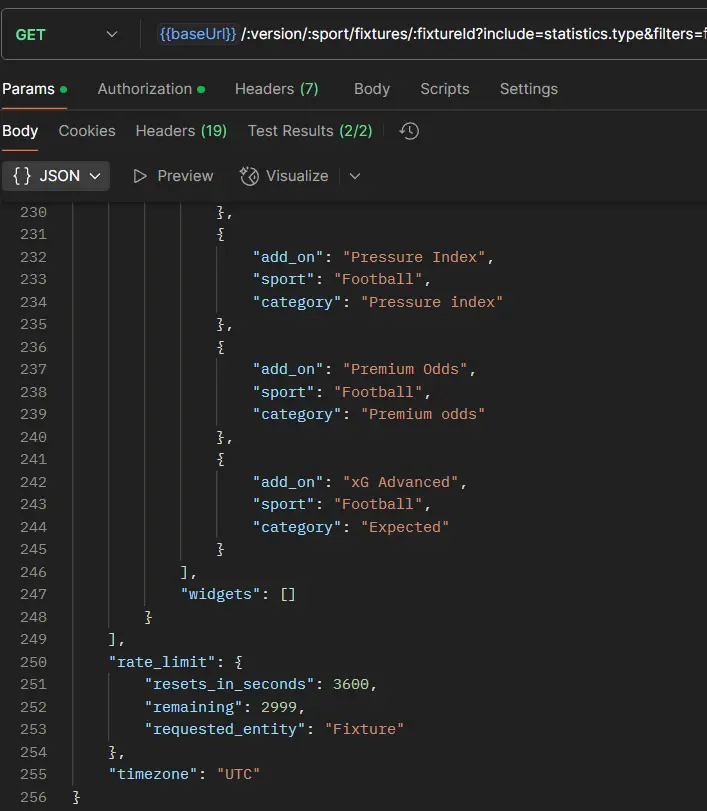
Terms of service and legal information
Include links to terms of service, privacy policies, and usage restrictions to build trust and clarify legal considerations. For example, specifying “Don’t resell data” sets clear boundaries for API usage. SportMonks provides a “Terms of Use” page to address legal questions, ensuring developers understand and comply with the API’s guidelines.
Tools for API documentation
Creating and maintaining high-quality API documentation is streamlined with the right tools. Here’s an overview of essential technologies that facilitate this process:
Swagger/OpenAPI
Swagger/OpenAPI is a leading framework for defining RESTful APIs. It allows you to specify endpoints, parameters, and responses using YAML or JSON formats. Tools like Swagger UI provide interactive documentation, enabling developers to visualise and test API operations easily. For instance, an endpoint such as /v3/football/teams/{id} can be documented as follows:
/v3/football/teams/{id}:
get:
summary: Get team details
parameters:
- name: id
in: path
required: true
responses:
'200':
description: Team data
Postman
Postman is a powerful tool for working with APIs. It helps developers create, test, and document API requests, like GET /fixtures, while adding notes for clarity. These requests can be turned into public documentation for easy sharing. Postman also includes features for team collaboration, mock servers for testing, and “Run in Postman” buttons to simplify onboarding. According to Postman’s 2023 State of the API Report, many API professionals use Postman as a key part of their workflow.
ReadMe.com
ReadMe.com is a platform for creating clear and user-friendly API documentation. It features an easy-to-use editor for endpoints, guides, and code snippets, along with interactive “Try It” tools for testing APIs. The platform also includes analytics to track user engagement and feedback, helping to improve documentation over time. The increasing use of such platforms highlights their importance in enhancing the developer experience.
GitBook
GitBook is a popular platform for creating modern, user-friendly documentation, and it’s the tool Sportmonks uses for their API docs. It offers a clean interface for writing guides, endpoints, and code snippets in Markdown, with features like version control and collaboration built in. GitBook’s intuitive design and ability to integrate with development workflows make it a top choice for technical documentation, trusted by many developers for its simplicity and effectiveness.
GitHub/GitLab pages
GitHub and GitLab Pages let you host documentation directly from your code repositories, providing a simple and cost-effective solution. By writing in Markdown or HTML, you can publish sites like docs.example.com from a /docs directory. Using static site generators such as Jekyll (Ruby) or Hugo (Go) can make the process even smoother. This approach keeps code and documentation in sync, ensuring consistency and accuracy.
Markdown
Markdown is a lightweight markup language with a simple syntax for formatting text, making it ideal for documentation. It uses clear formatting, such as # Headings for titles and bullet points for lists, which display well in both raw and processed forms. Its popularity in API documentation shows its flexibility and ease of use. Markdown works seamlessly across platforms like Postman, ReadMe, and GitHub/GitLab Pages, making it a reliable choice.
API documentation generators
Tools like Swagger Codegen and JSDoc automate the creation of API documentation by extracting details from code comments. For example, an annotation like / Get team /* can be converted into a full API specification. This automation reduces manual work, keeps documentation up to date with code changes, and improves accuracy, helping developers trust and rely on the information provided.
API testing tools
Tools like Postman and Insomnia help with both API testing and documentation. They can log real API calls—such as GET /teams returning a 200 status—and export these as guides. This ensures that documentation reflects real-world usage, making it more reliable and boosting developer confidence.
Static site generators
Static site generators like Jekyll, Hugo, and MkDocs convert text files into fast, static websites, making them ideal for hosting API documentation. They offer advantages such as speed, security, and easy deployment. Their widespread use in technical documentation highlights their effectiveness in creating high-performance and maintainable documentation sites.
API management platforms
Platforms like Apigee, AWS API Gateway, and Azure API Management offer end-to-end solutions for API documentation, monitoring, security, and analytics. They help organisations manage the entire API lifecycle, from development to retirement. The increasing adoption of these platforms underscores their importance in maintaining scalable and secure API ecosystems.
API documentation in API lifecycle management
API documentation is not a one-time task—it evolves alongside the API, ensuring clarity and usability at every stage. Here’s how it supports each phase:
– API design: During planning, documentation acts as a blueprint, outlining the API’s purpose, endpoints (e.g., /teams), and data flows. This guides development and ensures a structured approach.
– API testing: Accurate documentation serves as a benchmark during testing. Tools like Postman and Swagger UI use it to validate responses—e.g., confirming that GET /teams/19 returns the expected data. This helps maintain trust and reliability.
– API deployment: Up-to-date documentation is essential at deployment, informing developers of new endpoints, parameters, and changes (e.g., “v3 adds /stats”). Keeping documentation aligned with releases ensures seamless adoption.
– API onboarding: Comprehensive documentation speeds up onboarding. Quick-start guides and code snippets (e.g., “Fetch live scores in 5 minutes”) help developers integrate APIs quickly, boosting adoption.
– API support: Clear documentation reduces reliance on support teams. Well-defined error codes and troubleshooting steps (e.g., “401 error: Invalid API key”) enable developers to resolve issues independently.
– API maintenance: As APIs evolve, documentation must stay up to date. Linking documentation to version control systems ensures that changes—new features, deprecations, or modifications—are tracked and communicated effectively.
– API deprecation: When APIs are retired, documentation helps guide users through the transition. Notices such as “Deprecated: Use /v3/teams instead of /v2/teams”, typically with a six-month lead time, allow for a smooth migration.
– API governance: Documentation helps enforce standards and compliance, detailing protocols like “JSON only” or “HTTPS required”. Around 50% of organisations use documentation for governance, ensuring consistency and security.
– API monetisation: Well-documented APIs are easier to sell. Clear pricing models (e.g., “Real-time scores for £10/month”) showcase value, making APIs more attractive to potential buyers and driving revenue.


